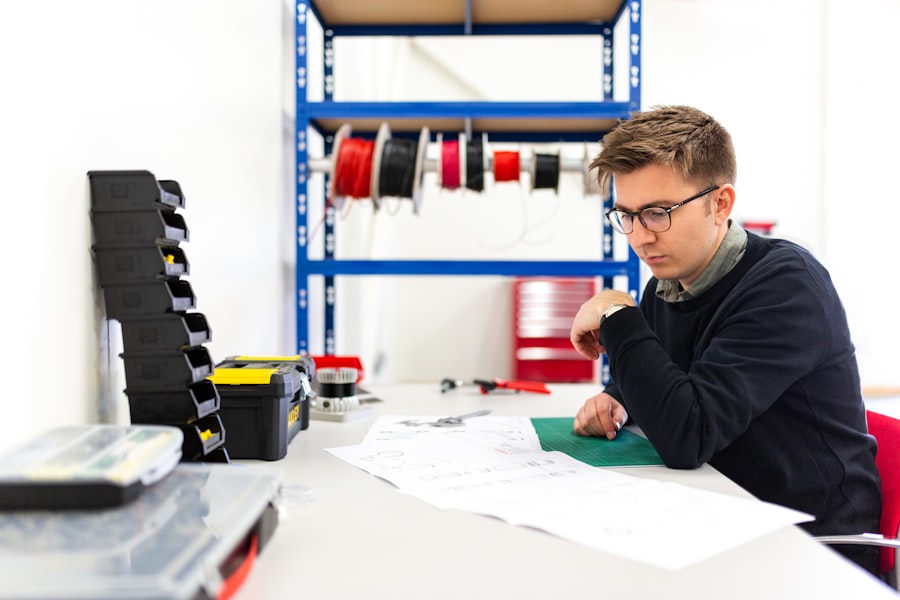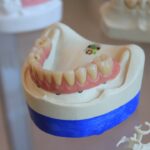Regular grooming is a crucial aspect of pet care that contributes significantly to an animal’s health and well-being. This practice not only maintains the pet’s appearance and hygiene but also plays a vital role in preventing various health issues, including skin infections and matting. Grooming sessions provide an opportunity for pet owners to detect any unusual lumps, bumps, or other physical abnormalities that may require veterinary attention.
Additionally, regular grooming can strengthen the bond between pets and their owners while reducing shedding and allergens in the home environment. The benefits of grooming extend beyond aesthetics and hygiene. It helps prevent painful conditions such as overgrown nails, ear infections, and skin irritations.
Keeping a pet’s coat clean and mat-free reduces the risk of parasite infestations, including fleas and ticks. Grooming sessions also allow owners to check for signs of dental problems, such as bad breath or tartar buildup, enabling early intervention to prevent more severe oral health issues. Regular grooming is an essential component of responsible pet ownership and contributes significantly to the overall health, comfort, and longevity of companion animals.
Key Takeaways
- Regular grooming is important for maintaining the overall health and well-being of your pet.
- Choosing the right grooming tools, such as brushes and combs, is essential for effective grooming.
- Proper brushing and bathing techniques are crucial for keeping your pet’s coat clean and healthy.
- Nail trimming and ear cleaning are important aspects of grooming to prevent infections and discomfort for your pet.
- Maintaining a healthy coat through proper grooming helps to reduce shedding and prevent mats from forming.
- Professional grooming services can provide expert care and attention to your pet’s grooming needs.
Choosing the Right Grooming Tools
Brushes for Different Coat Types
When it comes to grooming your pet, choosing the right tools is essential for achieving the best results. The type of grooming tools you will need will depend on your pet’s breed, coat type, and specific grooming needs. For example, a slicker brush is ideal for removing tangles and mats in long-haired breeds, while a bristle brush is better suited for short-haired breeds.
De-Shedding and Nail Trimming Tools
Additionally, a de-shedding tool can be helpful for reducing shedding in breeds with double coats. It’s important to invest in high-quality grooming tools that are specifically designed for pets, as using the wrong tools can cause discomfort or injury to your pet. Look for brushes with soft, rounded bristles and ergonomic handles for ease of use. For nail trimming, choose a pair of clippers that are the right size for your pet’s nails and have a safety guard to prevent cutting too close to the quick.
Ear Cleaning Essentials
When it comes to ear cleaning, opt for a gentle ear cleaner specifically formulated for pets to avoid irritation or damage to the ear canal. By choosing the right grooming tools, you can ensure a safe and effective grooming experience for your pet.
Brushing and Bathing Techniques

Brushing and bathing are two key components of regular grooming that help to keep your pet’s coat clean and healthy. Brushing should be done regularly to remove loose hair, prevent mats, and distribute natural oils throughout the coat. When brushing your pet, start with a slicker brush or comb to remove tangles and mats, then use a bristle brush or de-shedding tool to remove loose hair.
Be gentle when brushing to avoid causing discomfort or skin irritation. Bathing should be done as needed, depending on your pet’s breed and lifestyle. Use a gentle pet shampoo that is specifically formulated for your pet’s coat type, and be sure to thoroughly rinse out all soap residue to prevent skin irritation.
When bathing your pet, be mindful of their ears and eyes, and use a washcloth or cotton balls to protect these sensitive areas. After bathing, thoroughly dry your pet with a towel or blow dryer on a low heat setting to prevent skin infections. By using the right brushing and bathing techniques, you can help to maintain a healthy coat for your pet and reduce the risk of skin infections and other health issues.
Nail Trimming and Ear Cleaning
| Metrics | Results |
|---|---|
| Nail Trimming Frequency | Once every 4-6 weeks |
| Ear Cleaning Frequency | Once a week |
| Effectiveness | Reduces risk of infection and discomfort |
| Time Required | 5-10 minutes for both activities |
Nail trimming and ear cleaning are important aspects of regular grooming that are often overlooked but are essential for maintaining your pet’s overall health. Overgrown nails can cause discomfort and affect your pet’s gait, while dirty ears can lead to infections and other health issues. When it comes to nail trimming, it’s important to use the right tools and techniques to avoid cutting the quick and causing pain or bleeding.
If you’re unsure about how to trim your pet’s nails, consider seeking guidance from a professional groomer or veterinarian. Ear cleaning is also an important part of regular grooming, especially for breeds with floppy ears or those prone to ear infections. Use a gentle ear cleaner specifically formulated for pets and avoid using cotton swabs or other objects that could damage the ear canal.
Gently wipe the outer ear with a cotton ball or soft cloth, being careful not to insert anything into the ear canal. If you notice any signs of infection such as redness, swelling, or discharge, consult with your veterinarian for further evaluation and treatment. By regularly trimming your pet’s nails and cleaning their ears, you can help to prevent discomfort and potential health issues, contributing to their overall well-being.
Maintaining a Healthy Coat
Maintaining a healthy coat is an important part of regular grooming that involves more than just brushing and bathing. Proper nutrition plays a key role in the health of your pet’s coat, so be sure to provide a balanced diet that includes essential fatty acids and other nutrients that support coat health. Additionally, regular exercise can help to improve circulation and promote a healthy coat.
In addition to nutrition and exercise, regular grooming practices such as brushing and bathing are essential for maintaining a healthy coat. Brushing helps to remove loose hair and distribute natural oils throughout the coat, while bathing helps to keep the skin clean and free of dirt and debris. It’s also important to protect your pet’s coat from environmental factors such as sun exposure and harsh weather by providing shade and shelter when necessary.
If you notice any changes in your pet’s coat such as excessive shedding, dryness, or dullness, consult with your veterinarian to rule out any underlying health issues that may be affecting their coat health. By maintaining a healthy coat through proper nutrition, grooming practices, and environmental protection, you can help to keep your pet looking and feeling their best.
Handling Shedding and Mats

Understanding Shedding
Shedding is a natural process, but excessive shedding can be a sign of an underlying health issue or poor coat health.
Managing Shedding and Mats
To manage shedding, regular brushing is essential to remove loose hair and prevent mats from forming. Mats are tangles in the coat that can become tight and painful if not addressed promptly. To prevent mats from forming, brush your pet regularly with a slicker brush or comb to remove tangles and loose hair. If mats do form, use a de-matting tool or detangling spray to gently work through the mat without causing discomfort to your pet.
Additional Tips for Healthy Coat Care
In addition to regular brushing, providing a balanced diet that supports coat health can help to reduce shedding and prevent mats from forming. If you’re struggling with excessive shedding or mats despite regular grooming practices, consult with your veterinarian for further evaluation and guidance on managing these grooming challenges.
Professional Grooming Services
While regular at-home grooming is essential for maintaining your pet’s overall health and well-being, there are certain grooming tasks that may require the expertise of a professional groomer. Professional grooming services can provide specialized care such as breed-specific haircuts, de-matting services, and specialized treatments for skin and coat health. Additionally, professional groomers have the knowledge and experience to safely trim nails, clean ears, and address other grooming needs that may be challenging for pet owners to do at home.
Professional groomers also have access to high-quality grooming tools and products that may not be readily available to pet owners. This includes specialized shampoos and conditioners for different coat types, as well as professional-grade grooming tools that can make the grooming process more efficient and comfortable for your pet. Furthermore, professional groomers are trained to handle pets with patience and care, especially those who may be anxious or fearful during the grooming process.
This can be particularly beneficial for pets who have had negative experiences with grooming in the past or who have specific behavioral challenges that make at-home grooming difficult. Overall, professional grooming services can provide valuable support for maintaining your pet’s grooming needs and ensuring their overall health and well-being. Consider seeking out professional grooming services for specialized care that goes beyond what can be achieved through at-home grooming practices.
If you’re looking for more pet grooming tips, check out this article on Senhor Pets that offers advice on how to groom your pet at home. Whether you have a dog, cat, or other furry friend, this article provides helpful tips and techniques to keep your pet looking and feeling their best. Learn more about pet grooming here.
FAQs
What are some basic pet grooming tips?
Some basic pet grooming tips include regular brushing to prevent matting and shedding, bathing with pet-friendly shampoo, trimming nails, cleaning ears, and brushing teeth.
How often should I groom my pet?
The frequency of grooming depends on the type of pet and its specific needs. Generally, pets should be brushed regularly, bathed as needed, and have their nails trimmed every 4-6 weeks.
What tools do I need for pet grooming?
Basic grooming tools for pets include a brush or comb suitable for their coat type, pet-friendly shampoo, nail clippers or a grinder, ear cleaning solution, and a toothbrush and toothpaste designed for pets.
Are there any specific tips for grooming different types of pets?
Yes, different types of pets require different grooming techniques. For example, long-haired pets may need more frequent brushing to prevent matting, while pets with floppy ears may need extra attention to prevent ear infections.
What should I do if my pet is resistant to grooming?
If your pet is resistant to grooming, it’s important to be patient and gentle. You can try using treats to create a positive association with grooming, and gradually introduce them to the process to help them become more comfortable. If needed, seek professional help from a groomer or trainer.










